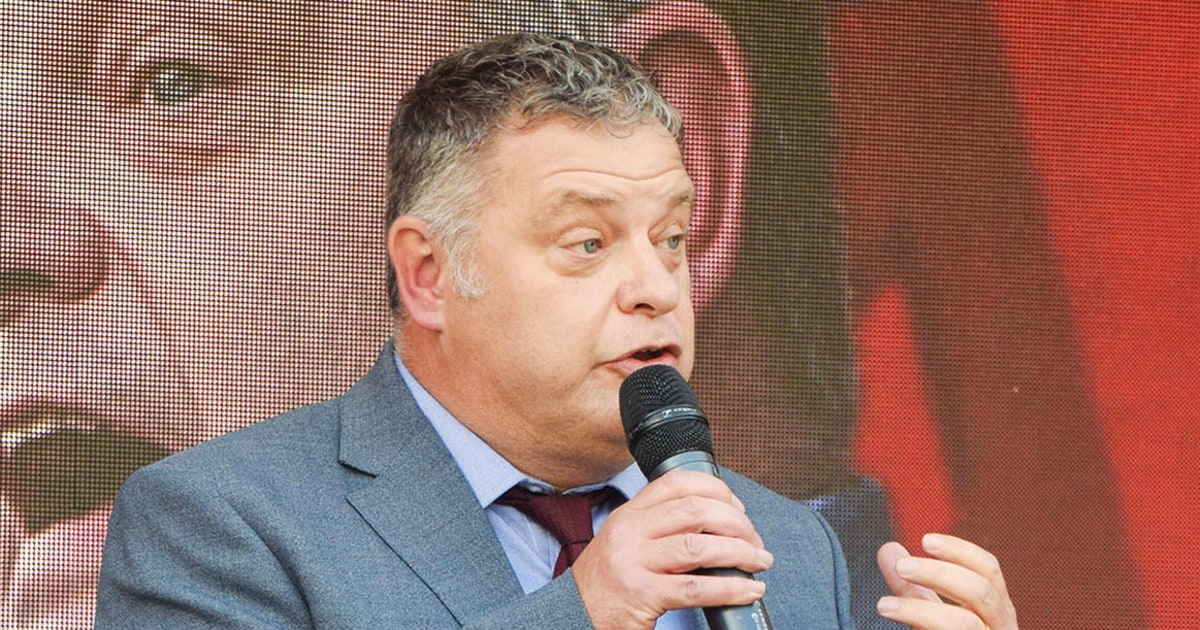LONDON — In the aftermath, as they swept the streets of charred rubble and reassembled garden walls brick by brick, the residents of Southport tried to make sense of how their seaside town had become the setting of such unimaginable scenes this week.
How false claims about a mass stabbing led to a riot in the U.K.

- by Admin
- July 31, 2024

Police charged a 17-year-old boy with murder and attempted murder, but didn’t explain any motive for the attack, which left three little girls dead and seven people in critical condition.
By Tuesday night, violent protests had erupted in the streets. Rioters chanting “we want our country back” threw anything they could find at police, who had only helmets, batons and plastic shields to protect themselves. The rioters smashed the windows of a mosque and looted a shop. They set fire to trash cans, tires and a police van, which burned for hours, filling the skies with black smoke.
Police blamed far-right extremists, who had been whipped up by false reports that an illegal immigrant had been responsible for the stabbings.
Fifty-three officers were injured, eight seriously, along with three police dogs.
The mosque’s imam told reporters afterward that he was cowering inside, afraid for his life. Things had always been so peaceful in his town, he said.
The stabbings, and the ensuing riot, have been round-the-clock news in Britain. The violence has stunned the country.
Although knife crime has been rising here, mass attacks are highly unusual. And although anger toward authorities and anti-migrant conspiracy theories have been part of British politics for sometime now, they have rarely exploded in this way.
As police and witnesses have told it, the horror in Southport began shortly before lunchtime on Monday, when a man wearing a hoodie and a surgical mask arrived in a taxi and argued with the driver over his fare. The man ducked into the alley, then moved quickly to the dance studio. Soon neighbors said they heard screams.
Bebe King, 6, Elsie Dot Stancombe, 7, and Alice Dasilva Aguiar, 9, have since died. Five other children remain in critical condition, along with a dance teacher.
Jonathan Hayes, who runs the business next door and was stabbed in the leg while trying to help the children, told the BBC from his hospital bed that he was “saddened” he could not have done more.
Because of the suspect’s age, his name has not been released by authorities. But he was born in Britain — in Cardiff, Wales — police stressed, and had been living in the nearby community of Banks. The BBC and Financial Times reported that his parents were originally from Rwanda.
Thousands of people came out for a vigil on Tuesday evening in Southport. In the crowd, couples held each other. Children were drawn closer. The mayor said, when placing flowers at the scene, “You couldn’t help but cry.” There was a minute of silence.
Yet while flowers and stuffed animals piled up in an impromptu memorial outside the dance studio, false information about the suspect had been circulating online, amplified by prominent far-right figures.
Within hours of the stabbings, an obscure social media account associated with an outlet calling itself Channel 3 Now News shared that the attacker was an immigrant who had come to Britain illegally by boat and had been on watch lists related to security and mental health. The post, on the X platform, gave a name for the suspect that police said was wrong.
“It looks like the tweet has been deliberately fabricated to generate hostility toward ethnic minorities and immigrants, and it’s a potentially Islamophobic piece of propaganda,” said Andrew Chadwick, professor of political communication at Loughborough University and expert in the spread of online misinformation.
Even though the social media company tacked a “community note” to the original post, the claim went viral.
According to X’s analytics, the post received at least 1.7 million views before it was deleted. Videos repeating the claim were shared by Andrew Tate, an American British former kickboxing champion who has built a popular personal brand around hypermasculinity, and Laurence Fox, an actor turned right-wing activist. Their posts received around 17 million views between them, according to X’s data.
Chadwick said the claim spread quickly online for a combination of reasons: Emotions were high as people sought information in the aftermath of a gruesome attack, the claim was charged, and content restrictions on X have been loosened since the social media platform was acquired by Elon Musk in 2022.
“We also know that historically social media algorithms are tweaked in order to further that content, because they know that it promotes engagement, and engagement over the long term is their business model,” he said.
Last year, an analysis by The Washington Post found that Musk’s platform was amplifying hate speech in its “For You” timeline, an unintended side effect of an algorithm that is supposed to show users more of what they want.
X, formerly Twitter, says in its user guidelines that hateful conduct, including attacking people on the basis of race, ethnicity or religious affiliation, is forbidden. A Post request for comment about the Southport case, sent to X’s main media email account, was met with an automated response: “Busy now, please check back later.”
Whatever they had heard about the stabbings, the men in tracksuits who showed up in the hundreds in the streets of Southport later Tuesday night were seething with anger — and intent to take it out on authorities.
Patrick Hurley, Southport’s member of Parliament, said the melee was carried out by “beered-up thugs” who were “using the horrific incident on Monday … for their own political purposes.”
Police identified the rioters as supporters of the English Defence League (EDL), a now-disbanded organization of anti-Islam agitators and soccer hooligans, who still gather often in raw, sometimes violent protests.
“There has been much speculation and hypothesis around the status of a 17-year-old male who is currently in police custody and some individuals are using this to bring violence and disorder to our streets,” police said in a statement.
“It is sickening to see this happening within a community that has been devastated by the tragic loss of three young lives,” Alex Goss, assistant chief constable of the Merseyside Police, said in a statement Tuesday. “Our officers and other members of the emergency services were faced with one of the most difficult situations they will ever face. Tonight, they find themselves being attacked as they endeavor to prevent disorder.”
The former de facto leader of the EDL, Tommy Robinson, issued denials on social media, writing, “There’s has been no EDL for over a decade.” But in a video seen more than 3 million times since he posted it on Tuesday around 9 p.m., he argued that “anger is justified” in Southport, because the British authorities have “opened our borders,” resulting in “children being butchered and murdered.”
“You care more for Afghanis, Somalis, Eritreans, Syrians, Pakistanis,” he shouted, red-faced. “They’re a danger to us.”
(Robinson’s whereabouts are unknown since he fled Britain on Sunday night, on the eve of unrelated contempt-of-court proceedings.)
According to the Liverpool Echo news website, Jenni Stancombe, the mother of one of the slain girls, wrote on social media, “This is the only thing that I will write, but please stop the violence in Southport tonight.”
Police said Wednesday that they had detained five men — three of them from Southport — after the riot and that further investigation was underway.
They are bracing for more violence.
The Latest News
-
October 29, 2024Daily horoscope: October 29, 2024 astrological predictions for your star sign
-
October 28, 2024‘Relish the opportunity’: Negotiations begin to revive Ashes series after 22-year hiatus
-
October 28, 2024Incredible pictures show transformed Sahara after ‘exceptional’ rain
-
October 28, 2024Lidl to open 10 more shops in Britain before Christmas – see if one is opening near YOU
-
October 28, 2024Women’s World Challenge: Great Britain finish fourth following defeat by Europe





